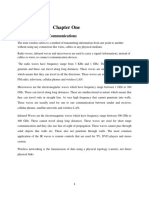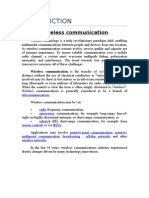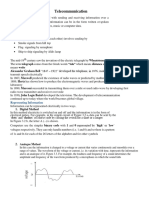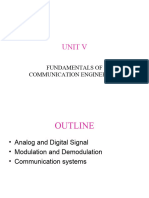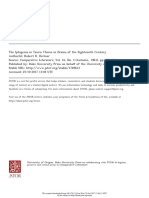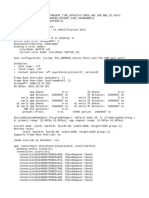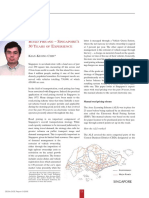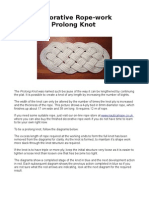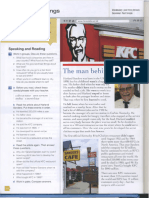Lehigh University Communications Internship & Development Program Summer Workshop on Wireless Communications
Prof. Shalinee Kishore Dept. of Electrical & Computer Engineering Lehigh University e-mail: skishore@lehigh.edu
July 26-August 3, 2004
This workshop was jointly supported by the National Science Foundation under grant CCF-0346945, Lehigh University, and the Susquehanna County Economic Development Office.
�Welcome
This summer workshop will introduce you to the core principles behind several important wireless technologies. First, we will discuss how wireless communications occurs, how radio signals are generated, how they move thru the air, etc. Once, these basic ideas are understood, we will look at how three important wireless networks operate.
�Content of Workshop
The three wireless networks we focus on are:
Cellular Telephony Global Positioning Systems WiFi
We will also briefly talk about WiMax, an emerging fixed wireless application that may be relevant for Susquehanna in the future.
�Outline of Workshop
July 26th-27th: Intro to Wireless Communications
July 27th-28th: How do Cell Phones Work?
July 29th-30th: How GPS Works July 30th: Basics of the Internet
August 2nd-3rd: How WiFi Works
�How Radios Work
�Radio Waves
Radio waves carry music, conversations, pictures, and data invisibly through the air over millions of miles. Radios can transmit and/or receive radio waves.
�Theyre Everywhere
All wireless technologies use radio waves to communicate.
Some examples:
Some other examples:
AM/FM Radios Cell Phones GPS Receivers Wi-Fi
Cordless Phones Garage Door Openers Radio-Controlled Toys Television Broadcasts Ham Radio Etc.
�Some Other (not-so-obvious) Examples
Radar (police, air traffic control, military applications) Microwave ovens Navigation systems Airplanes (contain dozen different radio systems) Baby monitors
�Simple, Cheap Radio
Take a fresh 9V battery and a coin Find AM radio and tune to an area of dial where there is static Hold battery near antenna Quickly tap two terminals of battery using coin Radio crackles due to connection/disconnection by coin. Battery/coin combo is a radio transmitter!
�Simple, Cheap Radio (Contd)
Battery/coin radio transmits static. Transmits only over short distance. Could use static to tap Morse code messages and communicate over several inches. May not be practical but is a simple example of a functional radio transmitter.
Why does it work? Well go over this next.
�How Simple Transmitters Work
Battery: connect to ends (terminals) of a battery with a piece of wire. Result: battery sends electricity (stream of electrons) thru the wire. There is voltage in the wire. When start electrons moving (create current in wire), a magnetic field is created around the wire. Magnetic field is strong enough to affect a compass.
�Simple Transmitter (Contd)
�Result of Simple Transmitter
Extend the experiment: take another wire, place it parallel to the battery wire but a few centimeters away from it. Connect a sensitive voltmeter to this new wire. Voltmeter will give a measure amount of electricity in new wire. When you connect/disconnect the battery wire, you will read a small voltage and current in the second wire.
�Simple Transmitter (Contd)
Observation: by changing the magnetic field in one wire, we can cause an change in the electric field in the second wire. Specifically,
Battery creates electron flow in one wire Moving electrons create magnetic field around one wire Magnetic field stretches out to second wire Electrons flow in second wire whenever magnetic field in first wire changes.
Electrons flow in second wire only when you connect/disconnect battery.
�Simple Transmitter (Contd)
We see then that a message can be converted to Morse code and then tapped using first wire (connect/disconnect). This first wire is a simple transmitter. The second wire is a receiver.
�Simple Receiver
Voltage changes in second wire can be used to determine Morse code taps. Morse code message is then decoded to get the message from the first wire. Result: communication of message occurs wirelessly (over a couple of centimeters) from the first wire to the second wire.
�Creating Simple Transmitters
When we change current in first wire in time, a current is induced in second wire. To create any radio transmitter, create a rapidly changing electric current in a wire. This can be done by connecting/disconnecting a battery. When connected, voltage in wire is 9V. When disconnected voltage in wire is 0V. Result: square wave signal.
9V 0V
Time (s)
�Sine Wave: Better than Square Wave
A better alternative to square wave is a continuously varying electric current in a wire. Simplest and smoothest continuously varying wave is a sine wave:
A simple radio transmitter created by running a sine wave thru a wire.
�Sine Waves
By sending sine wave electric current to antenna, you can transmit sine wave into space. All radios today, however, transmit continuous sine waves to transmit information (audio, video, data). Why sine waves? To allow many different people/devices to use radio waves at the same time.
�Sine Waves: Frequency
One cycle of a sine wave is:
Sine wave can be written as sin(2pt/T)
T seconds
When one cycle of a sine wave lasts T seconds, we say that the sine wave as frequency 1/T Hertz (Hz). 1 Hz = 1 cycle/second.
�More on Sine Waves
If there was a way to see radio waves, we would find there are literally thousands of different radio waves (sine waves) traveling thru the air (TV broadcasts, cell phone conversations, AM/FM broadcasts, etc.) Each different radio signal uses a different sine wave frequency. Use of different frequencies help separate different radio signals.
�More on Frequency
When you listen to AM broacast, your radio is tuning into sine waves oscillating at a frequency around 1,000,000 cycles per second. For example, 880 on the AM dial corresponds to listening to a radio (sine) wave that has frequency 880,000 Hz = 880 KHz. FM signals operate in range of 10,000,000 Hz. So, 90.9 on FM dial corresponds to 90,900,000 Hz = 90.9 MHz.
�Kilo, Mega, Giga, etc.
1 Hz 1000 Hz = 1 KHz (kilohertz) 1,000,000 Hz = 1 MHz (megahertz) 1,000,000,000 Hz = 1 GHz (gigahertz)
�More on Radio Basics
Any radio setup has two parts: Transmitter and Receiver Transmitter takes some form of message (someones voice, pictures for TV set, etc.) encodes it into a sine wave and transmits it with radio waves. Combination of encoded message on a radio wave is commonly referred to as a signal.
Receiver receives radio waves and decodes messages from the sine waves.
Both transmitter and receiver use antennas to radiate and capture radio waves.
�Transmitter Description
Radio Transmitter Radio Waves
Combine
Antenna
Information (voice message)
Sine Wave
Transmitter generates its own sine wave using oscillators.
�Receiver Description
Radio Transmitter
Antenna
Separate
Information (voice message)
Sine Wave
�Modulation
If you have a sine wave and a transmitter that is transmitting the sine wave into space using an antenna (more antennas later), you have a radio station. Problem with plain old sine wave: does not contain information. Sine wave has to modulated in some way so that it contains information, e.g., voice message.
�3 Basic Modulation Methods
Pulse Modulation (PM): turn sine wave on and off. Easy way to send Morse code.
�3 Basic Modulation Methods (Contd)
Amplitude Modulation (AM): Amplitude (peak-topeak voltage) of sine wave is changed so as to contain information.
AM radio stations and picture part of TV signals use amplitude modulation to encode information signal.
�Example of AM
carrier = sine wave with a given frequency
�3 Basic Modulation Methods (Contd)
Frequency Modulation (FM): Radio transmitter changes frequency of sine wave according to information signal.
Frequency modulation is most popular. Used by FM radio stations, sound part of TV signal, cellular phones, cordless phones, etc.
�Frequency of Signal after Modulation
Radio wave transmitted after modulating sine wave with information signal is not just a sine wave with frequency f. For example, in FM, the frequency varies around this frequency f. For example, it may increase up to f+Df and be as small as f-Df. After modulating information signal, the radio wave has some range of frequency, called the frequency band, e.g., 2Df. The bandwidth, width of frequency band, depends on the information signal (voice, data bit rate, etc.)
�Summary of Modulation
By modulating a sine wave at a transmitter, information can be encoded into the radio wave. The resulting radio wave occupies a band of frequency, centered on the frequency of the sine wave. Receiver needs to demodulate the radio wave to extract the information signal.
�AM Modulation Example
Car radio is tuned to radio station, say 880 AM. Transmitters sine wave is transmitting at 880,000 Hz (sine wave repeats 880,000 times per second). DJs voice is modulated onto sine wave, i.e., amplitude of sine wave is varied as DJs voice varies. A power amplifier magnifies power of modulated sin wave, e.g., to 50,000 Watts for a large AM station. Antenna then sends radio waves into space. High power amplification helps waves travel large distances.
�How do we receive AM signals?
Unless you sit right next to the transmitter, you need an antenna to pick out the radio waves from the air. An AM antenna is just a wire or a metal stick that increases the amount of metal the transmitters waves interact with. Radio receiver also needs a tuner. Antenna will receive thousands of sine waves; tuner separates out the radio wave that the listener desires, e.g., the radio wave transmitted at 880 KHz.
�AM Reception (Contd)
Tuners operate using a principle called resonance. That is, tuners resonate at and amplify one particular frequency and ignore all other frequencies in the air. After tuning in, radio receiver has to extract the DJs voice signal from the sine waves. This is done using a demodulator (aka detector).
�AM Reception (Contd)
One type of a AM detector is something called an envelope detector. Simply, it determines the magnitude (amplitude) of the sine wave. An amplify magnifies this amplitude signal and then the receiver sends the output to the car radio speakers. What we hear is the DJs voice.
�What about FM?
FM reception is very similar.
Difference: FM detector outputs changes in the sine wave frequency as opposed to amplitude.
Specifically, FM detector converts changes in sine wave frequency into sound. Antenna, tuner, amplifier are largely the same in FM as in AM.
�Handout: AM Receiver
Please refer to handout to develop a very simple AM receiver. It works only when you are near the AM radio station. If you are near an AM radio station and have the basic ingredients (a diode, two pieces of wires, small metal stake, and a crystal earphone), give this receiver a try.
�What about antennas?
Almost every radio you see (cell phones, car radio, etc.) has an antenna. Antennas come in all shapes and sizes. Shapes and sizes depend on the frequency the antenna is trying to receive. Ranges from long stiff wire (as in car radios) to large satellite dishes (as used by NASA). For satellites that are millions of miles away NASA uses antenna dishes that 200 feet wide.
�More on Antennas
Often radio stations use extremely tall antenna towers to transmit their signals. Antenna at radio transmitter: launch radio signals into space. Antenna at radio receiver: pick up as much of the transmitters power as possible and feed it to the tuner.
�Antennas (Contd)
Size of optimum radio antenna is related to frequency of the signal antenna is trying to transmit and/or receive. Reason for this: speed of light and the distance electrons can travel as a result. Speed of light is 186,000 miles/sec (300,000 meters/sec).
�Determining Antenna Size
Say you are building an antenna tower for radio station 680 AM. It is transmitting sine wave with frequency of 680,000 Hz. In one cycle of sine wave, transmitter is going to move electrons in the antenna in one direction, switch and pull them back, switch push them out, and switch and pull them back. That is electrons change direction four times during one cycle of the sine wave.
time
�Antenna Size (Contd)
When operating at 680,000 Hz, each cycle completes in 1/680,000 = 0.00000147 seconds. One quarter of the cycle is 0.0000003675 seconds. At the speed of light, electrons can travel 0.0684 miles (361 feet) in 0.0000003675 seconds. Cell phones operate using 900,000,000 Hz; this means that it needs antennas that are about 3 inches high.
�Antenna Size (Contd)
Question: why arent car radio antennas 300 feet high? It would be impractical for one. If you made car radio antenna higher, reception would be better. AM radio stations transmit at high powers to compensate for the suboptimal receive antenna heights.
�Some Questions
Why do radio waves transmit away from antenna into space at speed of light? How can radio waves transmit millions of miles? Doesnt antenna only create magnetic field in its vicinity? How can the magnetic field variation be registered millions of miles away?
�Answer
When current enters antenna, it creates a magnetic field around the antenna. This magnetic field creates an electric field (voltage and current) in another wire placed close to the antenna. In space, magnetic field created by antenna induces electric field in space. This electric field induces another magnetic field in space, which induces another electric field, These electric and magnetic fields (electromagnetic fields) induce each other in space at the speed of light in a direction away from the antenna.
�What is Radio Spectrum?
�Radio Frequencies
A radio wave is an electromagnetic wave propagated by an antenna. Radio waves have different frequencies and by tuning a radio receiver to a specific frequency, you can pick up a specific signal.
�Radio Frequencies (Contd)
Frequency 10 kHz to 30 kHz 30 kHz to 300 kHz 300 kHz to 3 MHz 3 MHz to 30 MHz 30 MHz to 328.6 MHz 328.6 MHz to 2.9 GHz 2.9 GHz to 30 GHz 30 GHz and above Band Very Low Frequency (VLF) Low Frequency (LF) Medium Frequency (MF) High Frequency (HF) Very High Frequency (VHF) Ultra High Frequency (UHF) Super High Frequency (SHF) Extremely High Frequency (EHF)
�FCC and Frequency Bands
In the U.S., the Federal Communications Commission (FCC) who is able to use which frequencies for which purposes. It issues licenses to stations for specific frequencies. For example, AM radio stations must use frequencies in 535 KHz to 1.7 MHz band.
FM radio stations transmit in band of frequencies from 88 MHz to 108 MHz.
�Spectrum Licenses for Cellular
Cellular telephony has been a growing and profitable tech industry. Service providers are keen to get licenses for this use. For this reason, cellular licenses are obtained for 10s to 100s of millions of dollars.
�Common Frequency Bands
There are hundreds of frequency bands for different wireless technologies. Some examples: Cell phones: 824 to 849 MHz Global Positioning System: 1227 to 1575 MHz Garage Door Openers: Around 40 MHz Baby Monitors: 49 MHz MIR Space Station: 145 to 437 MHz Deep Space Communications: 2290 to 2300 MHz
�Another Important Frequency Band
Human voice also has its own frequency band. Voices frequency band is from 0 Hz to 4000 Hz.
�Why is AM radio at a lower band than FM radio?
Mostly, due to history. AM was invented before FM. Transmitting at higher frequencies means that electronic equipment has to be faster. Fast enough to oscillate and detect highly-changing signals. When AM radio invented electronic capabilities were fairly limited (compared to nowadays). Hence lower frequencies were allocated. Later when FM radio was developed, it was assigned unused frequencies at a higher band.
�Duplexing
In some wireless systems, a radio unit will have capabilities to both transmit and receive (unlike a car radio but like a cell phone) at the same time. These radios are called full-duplex. In other systems, a radio unit can either transmit or receive at a given time. These radios care called half-duplex.
�Duplexing (Contd)
Both CB radios and walkie-talkies are half-duplex devices. Two people communicating on a CB radio use same frequency, so one person can talk at a time, otherwise the signals would overlap and interfere with each. More on interference later. In full-duplex systems, both radios can transmit and receive at the same time. For example, they use different frequencies to transmit and receive.
�Duplexing (Contd)
CB Radio: Half-Duplex
Cellular: Full-Duplex
�Beyond the Basics: Analog vs Digital
�Analog versus Digital
AM and FM is analog technology. Most new wireless systems are based on digital technology. Whats the difference?
�Analog versus Digital (Contd)
Analog signals take on a continuous range of values. Digital signals are quantized to take on one of a set of possible values.
Quantization
�Quantization
One way to convert an analog signal to digital is quantization. We assume an analog signal takes on a continuous range of values from xmin to xmax (0 to 1 in previous slide). The digital signal is only allowed to take on values {y1,y2,yN}, (e.g., {0, 0.1, 0.2, 0.3,0.9, 1.0}. A quantizer takes the analog signal over an interval and determines which of the possible values {y1,y2,yN} best represents the analog signal in this range.
�More on Digital Signals
More specifically, digital signals used in communications systems today are binary signals. Binary signals can only take on one of two values: 0 or 1, commonly known as bits. To understand bits, we first look at digits. A digit is a single place that can hold numerical values in the range of 0 to 9.
�Digits
Digits are normally combined together to make larger numbers. For example, 6,957 has four digits. 7 is hold the 1s place, 5 is holding the 10s, 9 is holding the 100s place, and 6 is holding the 1000s place. Each digit is placeholder for the next higher power of ten. Each place can have 10 different values; this implies that digits use a base-10 number system.
�Bits
Bits use a base-2 (binary) number system.
Reason computers and communication systems use binary number system is that electronic components are cheap.
Bit stands for Binary digIT. A binary digit is a sequence of 0s and 1s that represent numbers.
�More on Bits
0=0 1=1 2 = 10 3 = 11 4 = 100 5 = 101 6 = 110 7 = 111 8 = 1000 9 = 1001 10 = 1010
11 = 1011 12 = 1100 13 = 1101 14 = 1110 15 = 1111 16 = 10000 17 = 10001 18 = 10010 19 = 10011 20 = 10100
There are simple rules that have been developed to convert a digit to a bit.
�Bytes
Bits are rarely seen alone in computers. They are typically grouped together into 8 bit collections, called bytes. With 8 bits in a byte, a byte can represent values ranging from 0 to 255:
0 = 00000000 1 = 00000001 2 = 00000010 . . . 254 = 11111110 255 = 11111111
�How is a Quantized Digital Signal converted into Bits?
After quantization, a digital signal takes on one of a discrete set of values {y1,y2,.yN}. Each possible discrete value can be represented in binary format. Whenever the digital signal takes on particular value yi, the value yi is converted to binary format, i.e., a sequence of 0s and 1s. Result is a binary (digital) signal.
�How do we transmit binary signals using radio waves?
Binary signals are converted to radio signals using sine waves. There are several techniques (modulation) schemes. We described the most basic one, called binary phase shift keying (BPSK).
�BPSK
Rule for transmitting binary signals using BPSK is pretty simple. When the radio wants to transmit a 1, it just sends the normal sine wave. When the radio wants to transmit a 1, it multiplies the sine wave by -1 and sends that.
�An Example of BPSK Modulation
Voice (analog signal) Analog to Digital Converter
1 0
Radio Waves Sine wave 11 0 -1
1 -1
Antenna X
�Beyond Basics: Radio Propagation
�Radio Channel
There is another very important player in the wireless game: the physical environment over which radio waves travel. Radio waves can take many different paths to get from transmitter to receiver.
Transmitter
Receiver
�Radio Channel
Essentially, the radio waves interact with the physical environment along each of these paths. There are typically (unless you are in free-space) many paths from the transmitter to the receiver. Each path is called a multipath.
�Multipaths
The lengths of multipaths are different. As a result, sine waves along one path reach the receiver at different times than the same signal along a different path.
Transmitter
Receiver
�Worst Case Example of 2 Multipaths
Received radio wave along multipath 1
Received radio wave along multipath 2
The antenna combines (sums) these two multipaths. In the example above, the output of the antenna will be:
No Signal !!
�Another aspect of multipaths
Whenever a radio wave bounces off or passes through a physical obstruction, the amplitude of the sine wave changes. Also amplitude of sine wave shrinks the further the radio wave travels, regardless of whether there are obstructions or not.
Reflection aA -aA Received radio wave, a < 1
A -A Originally transmitted radio wave
�Impact of Multipaths
When all the radio waves on the multiple paths reach the receivers antenna, they combine together. Some multipaths cancel each other out, some add up together constructively, some partially cancel Signal each other, etc.
Radio Channel: Impact of Physical Environment
Transmitted radio wave Overall combined received signal at receive antenna
A -A
fades in and out and is distorted
�Fading
Fading, which is both signal attenuation and distortion, is a major challenge in wireless communications. We have all experienced it, e.g., fading of radio station in a car radio. Fading varies in frequency: assuming physical conditions are fixed, if a signal transmitted at one frequency fades, it may not if transmitted at a different frequency.
�Problem with Distortion
Distortion not only impacts the strength of the received signal but also changes the shape of the received signal. In this digital communications, this can be especially detrimental because bits can be inverted at the receiver due to multipath. Example is shown in next slide.
�Fading (Contd)
1 0 0 1 1 0 Signal along Multipath 1 Transmitted Signal Overall Received Signal Signal along Multipath 2
This type of distortion occurs anytime there is long time spread in the multipaths.
�Fading Challenges
Time spread of multipaths = delay due to echoes.
These echoes are particularly problematic in urban areas, due to reflections from buildings. Also problematic in hilly, mountainous areas, like Susquehanna County.
Designers of radio systems have spent a lot of time and effort trying to overcome this fading challenge.
�One Solution: Multiple Antennas
One way to overcome fading problem is to design receivers with multiple, say 2, antennas. Both antennas can receive the desired radio wave.
Transmitter
Receiver
�Multiple Antennas (Contd)
If receive antennas are adequately separated, then paths followed by radio waves to the first antenna are different from paths followed by radio waves to the second antenna.
Result: fading of received signal on first antenna is different from fading of received signal on second antenna. Chances are if one antenna experiences a deep fade, the other does not.
Receiver can adaptively choose the stronger antenna to determine the received radio wave at any given time.
�Multiple Antennas on Cell Towers
Cellular base station tower (antenna tower that cell phones talk to) use multiple antenna to improve the quality of voice signal received from cell phone users.
�Another Solution: Adaptive Antenna Array
Of all the multipath, if there is a line-of-sight (LOS) path between the transmitter and receiver, it is the strongest. If we can design antennas receive patter, we would like to make it in the direction of the strongest multipath. This is what adaptive antenna array do.
�Adaptive Antenna Array (Contd)
Adaptive antenna array is a group of receive antennas that work together to form a desirable radiation pattern. For example, if the LOS path is in a particular direction, the antennas work together to pick out as many radio waves in that direction as possible. In doing so, the antennas ignore radio waves in nonsignificant directions. These waves do not contribute to the overall fading.
�Cellular Tower Example
Assume that a cellular base station tower is receiving signal from four cell phone users. The tower can use its antennas to form the following radiation power (birds eye view).
No signals received from this direction
User 1
User 3
User 2
No signals received from this direction
Cellular Base Station
User 4
No signals received from this direction
�Other Fading Countermeasures
Both previous schemes are antenna techniques to counter fading. Designers have developed other methods, e.g., coding. One simple coding method: repetition. Repetition: transmit the same signal a few times. Chances are one of the copies will be received without deep fades.
�Beyond Basics: Interference
�Limited Radio Spectrum
Assume one transmitter is sending a signal using a sine wave of frequency f1. Ideally, we would like there to be only one transmitter sending a signal at this frequency. Problem with this: since there is only limited frequency (see radio spectrum), only a limited number of transmitters can send radio waves at a given time. Because of limited radio spectrum, it becomes necessary to reuse frequencies.
�Frequency Reuse
Regulators (FCC) and system designers allow multiple transmitters to use the same frequency to transmit radio waves. Problem with this: receive antenna may receive signals from the wrong (undesirable) transmitter. Worse yet, the two sets of radio waves from the two transmitters may combine together at receiver to produce interference, an undecipherable received signal, e.g., loud static on a car radio.
�Methods to Reduce Multiple Access Interference
This multiple access interference is typically avoided by making sure that transmitters that use the same frequency are separated by large distances. Large distance ensures that interference power is small (recall: amplitude of radiated sine wave shrinks with distance).
Interference Desired Signal
Transmitter
Receiver Interference
Desired Signal
Transmitter
Receiver
Both transmitters use same frequency
�Reuse Distance
If the frequency reuse distance is large, then interference power is low compared to desired signal power. If desired signal power is much higher than the interference power, then, chances are, the receiver will be able to determine the (desired) transmitted signal correctly.
�Frequency Reuse
This concept of frequency reuse is used in cellular systems (explained in more detail) next time. Frequency reuse also used in broadcast TV. In NYC, ABC, CBS, and NBC use channels 7,2, and 4, respectively. Channel number corresponds to specific frequency band assigned to the broadcaster in NYC. In Philadelphia, these channels are not used at all. These frequencies are not reused over a large region surrounding NYC. This is to ensure that broadcasters do not interfere.
�Other Interference Avoidance Techniques
Because of limited spectrum, interference is unavoidable in wireless systems. Reuse distance is one way to reduce the interference. Engineers have developed (and continue to develop) other interference avoidance techniques: Receiver structures Antenna methods Etc.
�Summary
In these slides, we have learned the basics of wireless communication systems. In the next few days, we will look at how particular systems work. Next time, we focus on the cellular phone system.












